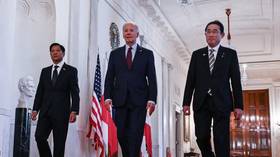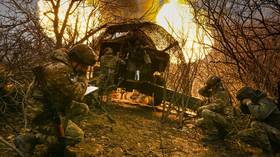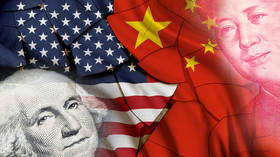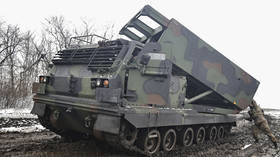Naval vessels collide in disputed South China Sea
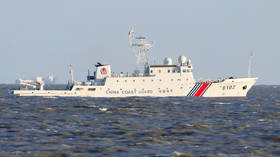
A Chinese Coast Guard vessel and a Philippine navy boat collided in the South China Sea on Monday, an incident of which the two sides provided differing accounts.
The collision occurred when the Philippine naval vessel attempted a resupply run to the BRP Sierra Madre, an old tank landing vessel grounded on the Second Thomas Shoal, a small submerged reef near the Spratly Islands. The ship, originally built for the US Navy during WWII, was deliberately run aground in the area in 1999 and has served as an outpost for the Philippine military ever since.
“A Philippine Navy personnel sustained severe injury after the CCG’s [China Coast Guard’s] intentional high-speed ramming during the rotation and resupply mission to the BRP Sierra Madre (LS57) on June 17,” according to a statement by the country’s military.
The Chinese Coast Guard, however, claimed that the Philippine vessel had “dangerously approached and deliberately collided” with its ship while attempting to resupply the “illegally grounded warship.” Following the collision, the Chinese vessel took “control measures” to check the supply boat and expel it from the area.
“The handling [of the incident] was reasonable, legal, professional and standard,” the Coast Guard stated.
Washington backed the Philippine account of the collision. The Department of State called Beijing out over what it called “escalatory and irresponsible actions.” The Chinese vessel prevented “the Philippines from lawfully delivering humanitarian supplies to service members stationed at the BRP Sierra Madre,” it said.
The Chinese vessels’ “dangerous and deliberate use of water cannons, ramming, blocking maneuvers, and towing damaged Philippine vessels, endangered the lives of Philippine service members, is reckless, and threatens regional peace and stability,” the State Department added.
A similar incident involving Chinese and Philippine vessels occurred in the area in March. The Philippines has ramped up its activities around the BRP Sierra Madre since late last year, seeking to refurbish the old vessel and improve the living conditions of military personnel stationed at the outpost.
The South China Sea is the subject of numerous overlapping claims by countries in the region. Apart from China and the Philippines, Vietnam, Malaysia, Indonesia, and Brunei, as well as the self-governing Chinese island of Taiwan, claim parts of it. The waterway sees significant volumes of commercial traffic and serves as the key conduit for the foreign trade of South Asian nations.
Tensions in the region have been further aggravated by the activities of the US and its allies, which routinely send in so-called “freedom of navigation” missions through the area claimed by Beijing as its exclusive economic zone.
